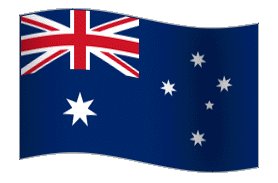Reiki Healing
Reiki is an energy healing technique that promotes relaxation, reduce stress and anxiety through gentle touch. Reiki practitioners use their hands to deliver energy to your body, improving the flow and balance of your energy to support healing. Mikao Usui developed reiki in the early 1900s, deriving the term from the Japanese word’s rei, meaning “universal,” and ki, which refers to the vital life force energy that flows through all living things. Now, reiki is used all over the world, including in hospitals, to complement other forms of health treatments.
The health benefits of reiki
Reiki promotes relaxation, stress reduction and symptom relief to improve overall health and well-being. It can:
- Bring on a meditative state.
- Foster tissue and bone healing after injury or surgery.
- Stimulate your body’s immune system.
- Promote natural self-healing.
- Relieve pain and tension.
- Support the well-being of people receiving traditional medical treatments such as chemotherapy, radiation, surgery and kidney dialysis.
Evidence that reiki treatment may create feelings of:
- Peace.
- Relaxation.
- Security.
- Wellness.
How does reiki work?
Reiki practitioners act as a conduit between you and the source of the universal life force energy. The energy flows through the practitioner’s hands to you. “The patient determines the energy flow from the practitioner’s hands by taking only what they need,” Bodner says. “This helps the patient know that we are supporting them only in what they need rather than what we think they need. This makes it the perfect balance to meet the patient’s needs.”
Reiki Symbols
Cho ku rei: The power symbol.
If you’re looking to either increase or decrease power, cho ku rei is the symbol for you. It can be identified with a drawing of a coil (which can be drawn in a clockwise or counter clockwise direction) and represents chi, or the transfer of energy throughout the body. When visualizing the power symbol, imagine a “switch”—meaning once it’s activated, the Reiki practitioner instantly has a greater ability to illuminate, enlighten, and channel energy in their body.
Sei he ki: The harmony symbol.
When you’re in need of purification and mental and emotional balance, turn to Sei he ki. The general meaning of sei he ki is “God and man become one,” and the drawing of the symbol for sei he ki resembles either a wave cresting and getting ready to crash over a beach or a bird’s wing. It can also aid in balancing the right and left sides of the brain and is often thought of as a protection Reiki symbol on top of being a harmony symbol.
Hon sha ze sho nen: The distance symbol.
The concept of hon sha ze sho nen is a bit more difficult to grasp than some of the other Reiki symbols, but not tremendously so. The meaning is “having no present, past, or future,” and it’s used to send Reiki energy across time and space. For example, although hon sha ze sho nen can’t change the past, it can help heal old wounds by reframing the experience and turning it into a learning experience rather than simply a devastating event that has no rhyme or reason. Hon sha ze sho nen can also help Reiki practitioners send Reiki into the future, ahead of events that could bring bad news, such as exams, doctor’s appointments, or difficult conversation with loved ones.
Dai ko myo: The master symbol.
All hail the powerful Dai ko myo, or master symbol. This symbol is a nourishing and enlightening one, and it is the most sacred Reiki symbol. It also has the highest vibration, and it has the most transformative power of all five of the Reiki symbols. The healing powers of dai ko myo are all-encompassing, healing the upper chakras, the aura, and the soul as a whole. Dai ko myo is the empowerment symbol, and means “great enlightenment” or “bright shining light.” By aiding in the process of spiritual enlightenment, dai ko myo helps bring Reiki practitioners closer to God.
Raku: The completion symbol.
Raku is a Reiki symbol that’s used at the master level, and it’s also known as the “fire serpent”—and one look at its shape will tell you why. It’s drawn in zigzag, lightning-bolt-like shape that’s used primarily for grounding after Reiki. Drawn from head to ground, the purpose of raku is to allow the body to receive the benefits of Reiki—much like how savasana is used at the end of yoga to help the body absorb all the benefits of the practice. Above all, raku is a grounding symbol, and this symbol should also be used by Reiki practitioners as a way of clearing any negative energy they may have absorbed from the person they were practicing on.




